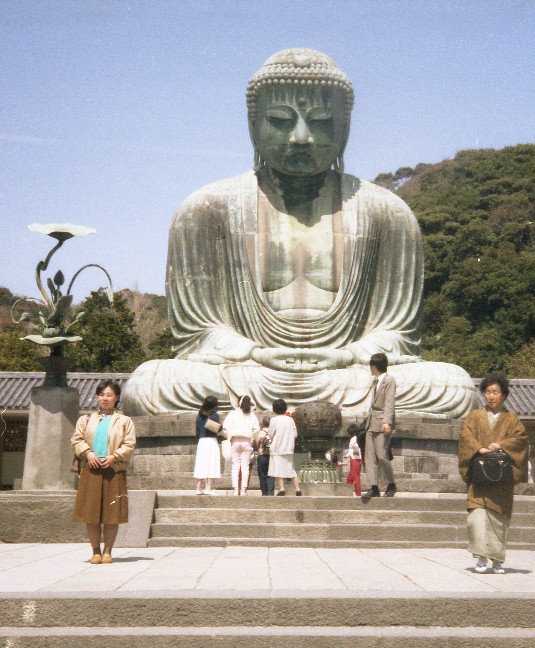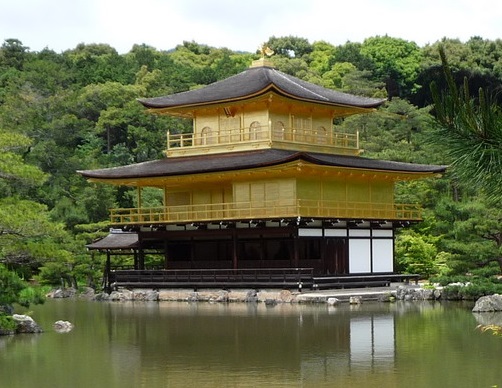

Religion in Japan
To understand Japan, it is important to know what forms of religion there are and to get a sense of the role they play in the context of culture and society. There is, of course, no such thing as Japanese religion, which is often mentioned in the literature about Japan. What we do have is a fascinating wealth of often very different religions and forms of religion. Some are very old, with long traditions, but there are also many newly established religious organisations. Overall, it can be said that the various forms of indigenous Shintō and Buddhism, mainly adopted from China, still exert the strongest influence in the country today. It should be noted, however, that the boundaries between the various religions and between them and various areas of culture and society are fluid and often undefined.
Unlike in Europe, for example, there is seldom a fixed affiliation to a religion around which an entire way of life is oriented. As in other areas, people in Japan prefer to leave their relationship to religion undefined or open. When people in Japan are asked by foreigners about "their" religion, they are usually surprised and rather embarrassed. As people do not like to answer negatively, the answer is usually Buddhism.
Foreign observers often react very differently to the manifestations of religion in Japan. Some are fascinated by the unbelievable wealth of religious phenomena, the countless temples and shrines, the religious festivals and customs, and the numerous new religious communities that are constantly springing up. Others point out that religion plays little part in the lives of most Japanese, or is often viewed with disdain and suspicion. Even among scholars, opinions on the subject of "religion in Japan" often vary widely.
In order to get our feet firmly on the ground, it is worth looking at the statistical data on religion in Japan. For a long time these were not very numerous and in some cases practically unusable. The latter is especially true of the comprehensive statistics on the various religions in Japan published annually by the Agency for Cultural Affairs (a subdivision of MEXT). They are incomplete and based only on voluntary data provided by religious organisations. If you multiply all the households in a temple district by four as the number of believers, or even all the subscribers to a religious magazine, it is not surprising that the number of 'believing' Japanese far exceeds the total population. It says nothing about the actual number of believers. Unfortunately, this is still misinterpreted in publications on religion in Japan (as recently as 2022 by the CIA).
Fortunately, a number of comprehensive surveys of religion in Japan have appeared in recent years, giving a better and more up-to-date picture. These are presented separately in Data on Religion in Japan.
They show that since the 1960s the number of people in Japan who identify themselves as believers has hovered around 30%. If you see religion as something that affects you absolutely, something you can trust completely (as in Christianity), then the number of religious people in Japan is probably much smaller.
This is shown by a survey in the Asahi Shimbun (22 July 1978). Asked what they could rely on in these uncertain times, 41% answered "family", 30% "money", 6% "politics", 5% "friends", 5% " the company", 4% "religion", 4% "education", 1% "associations". On the other hand, 62% of people in Japan feel close to Buddhism, only 21% to Shintō, 12% to Christianity [see ISSP].
The most important religion in Japan is clearly Buddhism, but many Japanese think of Buddhism first in terms of funerals and tourism, because they have few other points of contact.
However, I would like to show that there are other forms of Buddhism, some of them very old traditions of deep religiosity, using the example of Shinran (1173-1263), whose personal experience of faith and teachings are still alive in many ways in Japan today, even outside Buddhism. It forms the basis of the largest group of Buddhist schools in Japan and shows a striking correspondence with Luther's faith experience and teaching.
On the other hand, there are fundamental structures of Japanese religiosity and mentality that can be found in most religions in Japan, especially in the Shintō, and which also partly overform Buddhism and virtually turn its original teachings into their opposite. It is the tendency to accept reality as it is (sono mama), to live with optimism entirely in the present and even to experience it as the best of all worlds. [more in detail]
Of course, it is not possible to show the whole wealth of religious phenomena in Japan and their historical origins within the framework given here. Instead, the main aim is to address the forms of the religious that are often misunderstood, and especially those that allow new, often fascinating insights into the world of religion.

